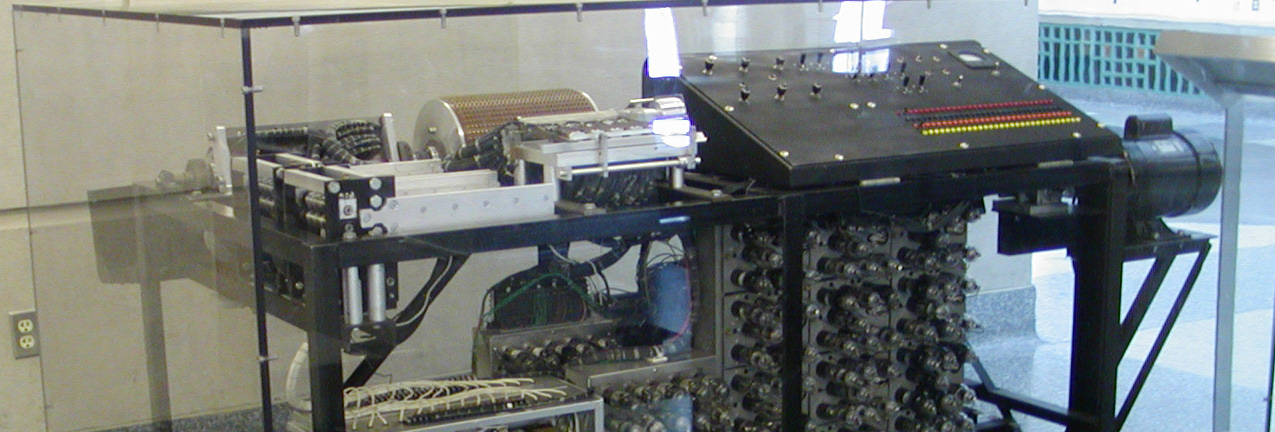The Midwest, which is often referred to as the “Heartland,” is celebrated for its scenic rolling prairies, rich farmland, and storied agricultural history. But beyond its pastoral charm, the Midwest has also been a cradle of innovation and a source of game-changing inventions that have transformed American and global society. From the steamboat to the telephone, the Midwest has long been a fertile ground for ingenuity and creativity.
This feature will showcase some of the most notable inventions that originated in the Midwest, but it’s important to note that this is just a small sampling of the technological contributions made by people living in this region. I was inspired to explore these inventions by a fascinating article on onlyinyourstate.com, which offers intriguing facts and insights about the diverse states that make up the U.S. By examining the impact of these inventions on society, we can gain a greater appreciation for the pivotal role the Midwest has played in shaping American culture and technology.
The First Electronic Digital Computer
](https://rootstalk.blob.core.windows.net/rootstalk-2023-spring/allen-2-volume-ix-issue-1-spring-2023.jpg)
A replica of the Atanasoff-Berry Computer at Iowa State University. Photo courtesy of Wikimedia Commons
Invented in 1941, the Atanasoff-Berry Computer (ABC), named after its inventors John Vincent Atanasoff and Clifford Berry, is considered the first of its kind. Although some people believed the ENIAC computer to be the first, it was later found that ENIAC used ideas that were originated by the creators of ABC. The ABC was designed for solving systems of linear equations. To do this, it used binary numbers, storing them as data through use of capacitors, which are devices used to store electrical energy. This concept of storing data in capacitors paved the way for modern computers.
The ABC was a bulky machine that weighed around 700 pounds and measured roughly six by three by three feet. The ABC could perform about 30 operations per second. In contrast, highlighting the vast difference in computational power between the ABC and modern computers, today’s machines are capable of performing billions, or even trillions of operations per second, making them able to handle complex tasks such as data analysis, machine learning, and artificial intelligence.
The First Skyscraper
, first skyscraper in the world. Photo courtesy of Wikimedia Common.](https://rootstalk.blob.core.windows.net/rootstalk-2023-spring/allen-3-volume-ix-issue-1-spring-2023.jpg)
The Home Insurance Building, first skyscraper in the world. Photo courtesy of Wikimedia Common.
When we think of skyscrapers, we often imagine towering structures in bustling cities like New York. However, the first skyscraper, the Home Insurance Building, was built in the Midwest, specifically in Chicago, Illinois, in 1885. The 10-story (138 feet tall) building was designed by William Le Baron Jenney, who is credited with being the “father of the skyscraper.” In 1891, two more floors were added to the building, bringing it to 180 feet in height. What made this building unique was that it was constructed using a steel frame, which allowed it to be much taller and stronger than traditional masonry buildings. Its design featured a base that was wider than the top, which helped to evenly distribute the weight of the building. The exterior was made of brick and terra cotta, with large windows that provided ample natural light and ventilation.
Inside, the open floor plans were made possible by the steel frame. The building was also one of the first to use elevators. It was an instant success, setting the standard for future skyscraper designs. Its construction marked the beginning of a new era of tall buildings around the world, with many cities following in Chicago’s footsteps and adding other innovative construction techniques to the use of steel frames. Although the Home Insurance Building was demolished in 1931 to make way for another, larger skyscraper called the Field Building, its legacy as the first true “skyscraper” lives on.
The Discovery of Helium in America
](https://rootstalk.blob.core.windows.net/rootstalk-2023-spring/allen-4-volume-ix-issue-1-spring-2023.jpg)
A helium-filled tube shaped like the element’s atomic symbol Photo courtesy of Wikimedia Commons
Helium is an important gas for a wide range of applications, useful in nuclear reactors, MRI machines, welding, and scientific research. It was first observed in 1868 by French astronomer Pierre Janssen and English astronomer Joseph Norman Lockyer when they noticed a particular yellow light being emitted from the sun’s atmosphere during a solar eclipse. Lockyer decided to call this new element helium, named after the Greek word for sun, “helios”.
However, it was believed to be rare on Earth and wasn’t extracted in the United States until 1905 when a geologist named Hamilton Cady and a mining engineer named David McFarland were drilling for natural gas in Dexter, Kansas. They noticed that some of the gas samples contained an unknown gas that did not behave like any of the other gases they were familiar with. After many months of careful experimentation and analysis, Cady and McFarland were able to determine that the unknown gas was, in fact, helium. By 1907, Cady stated that helium was in fact quite common. To illustrate the significance of this fact: before Cady’s discovery, the amount of helium sufficient to fill a small blimp (roughly 40,000 cubic feet of the gas) would have cost $100 million. After Cady’s discovery that amount only cost $1,200.
The Liquid-Crystal Display
](https://rootstalk.blob.core.windows.net/rootstalk-2023-spring/allen-5-volume-ix-issue-1-spring-2023.jpg)
Diagram of a liquid-crystal display. When current is applied, the crystals align and are stopped at the second polarizer, creating a dark pixel. Photo courtesy of Wikimedia Commons
James Fergason, an American inventor born in Wakenda, Missouri, is credited with the groundbreaking invention of liquid-crystal display (LCD) technology in the late 1960s. Fergason’s breakthrough came when he joined the Liquid Crystal Institute at Kent State University and discovered that liquid crystals could be manipulated to control the passage of light, using the twisted nematic effect. This finding paved the way for this revolutionary display technology that would later become ubiquitous in many electronic devices.
Fergason’s idea was to leverage the unique properties of liquid crystals, a state of matter that exhibits characteristics of both liquids and crystals, to create a controllable medium for modulating light. He developed a device called the “Twisted Nematic Field Effect” (TNFE) that held a layer of liquid crystals sandwiched between two glass plates, with electrodes applied to the surfaces. By applying electrical voltage to the electrodes, Fergason was able to manipulate the orientation of the liquid crystals, causing them to twist and control the passage of light.
Fergason’s invention of LCD technology revolutionized the display industry, leading to the development of flat panel displays that are now commonly used in devices such as televisions, computer monitors, smartphones, and tablets. LCD displays offer numerous advantages, including high image quality, low power consumption, and compact size, making them an integral part of modern consumer electronics. James Fergason’s pioneering work in developing LCD technology has had a profound impact on the way we view and interact with digital information, and his invention continues to shape the world of displays today.
First American Gasoline Automobile
](https://rootstalk.blob.core.windows.net/rootstalk-2023-spring/allen-6-volume-ix-issue-1-spring-2023.jpg)
The first working American gasoline car, 1891. Photo courtesy of Wikimedia Commons
John William Lambert, a renowned American inventor and engineer, is widely recognized as the mastermind behind the first successful gasoline-powered automobile in the United States. Hailing from Mechanicsburg, Ohio, Lambert constructed this groundbreaking vehicle in 1890 and has since been revered as the “Father of the American Automobile.”
Lambert’s gasoline-powered three-wheeled buggy featured a single-cylinder, two-stroke engine. He eventually opted to discontinue the original design in favor of the more dependable and widely adopted four-wheel configuration that remains in use to this day. With a modest 3/4 horsepower, it could reach a top speed of around 5 miles per hour. The engine featured a carburetor, a device that created a combustible mixture of air and fuel that powered the engine. Additionally, Lambert’s automobile incorporated a mechanical transmission system and a chain-drive to rotate the wheels.
](https://rootstalk.blob.core.windows.net/rootstalk-2023-spring/allen-7-volume-ix-issue-1-spring-2023%281%29.jpg)
The new and improved four-wheel car produced by the Lambert Automobile Company in 1908. Photo courtesy of Wikimedia Commons
A distinct feature of Lambert’s invention was its innovative fuel system. Unlike conventional gravity-fed fuel tanks, Lambert’s vehicle boasted a pressurized fuel tank that utilized air pressure to force gasoline into the carburetor. This pressurized fuel system ensured a consistent and reliable supply of fuel to the engine, which greatly improved its performance.
In early 1891, Lambert’s gasoline automobile made history as it hit the roads of Ohio City, becoming the first successful gasoline-powered automobile to be built and driven in the United States. Lambert continued to refine his designs and build more automobiles, making significant contributions to the fast-growing American automobile industry. His revolutionary invention laid the foundation for the rapid growth and advancement of the automobile industry in the United States in the years to come.
Stroboscopic Photography
](https://rootstalk.blob.core.windows.net/rootstalk-2023-spring/allen-8-volume-ix-issue-1-spring-2023.jpg)
The motion of a bouncing basketball captured with stroboscopic photography. Photo courtesy of Wikimedia Commons
Stroboscopic photography involves using a flashing light source to capture pictures of a moving object at different points in its motion. It is credited to Harold E. “Doc” Edgerton of Nebraska ca. 1930-1940s and has a fascinating origin story. Edgerton’s passion for photography was ignited during his teenage years when he learned the art from his uncle. Driven by his deep interest in photography, he even went on to create his own darkroom at home to process his film photographs.
As Edgerton continued in his academic pursuits, he went to MIT for postgraduate studies where he began experimenting with a stroboscope, which generates rapid, repeated bursts of light. This innovative technology allowed him to capture images in a way that had never been done before. By utilizing the stroboscope’s ability to freeze motion, Edgerton was able to capture fleeting moments with extraordinary clarity and detail, revealing an exciting new world of visual possibilities.
The impact of Edgerton’s invention was clear, revolutionizing the field of photography and opening new avenues for scientific, artistic, and industrial applications. His pioneering work in stroboscopic photography has left a permanent mark in the realm of visual imaging, and his legacy as a visionary inventor and photographer continues to inspire generations of innovators and artists today. The image above vividly exemplifies the remarkable effect achieved through stroboscopic photography, that is its ability to freeze motion with an unprecedented amount of clarity.
1 Mobley, B. P. (2001). The Ingenuity of Common Workmen: and the Invention of the Computer (dissertation). ProQuest Information and Learning Company, Ann Arbor, MI.
2 Burks, A. R., & Burks, A. W. (1988). The First Electronic Computer: The Atanasoff Story. University of Michigan Press.
3 Mackintosh, A. R. (1988). Dr. Atanasoff’s Computer. Scientific American, 259(2), 90-96. http://www.jstor.org/stable/24989199
4 Bellis, M. (2020, January 10). Why the First Skyscraper was Only Ten Stories Tall. ThoughtCo. Retrieved May 4, 2023, from https://www.thoughtco.com/how-skyscrapers-became-possible-1991649
5 Editors, History.com. (2010). Home Insurance Building. History.com. Retrieved May 4, 2023, from https://www.history.com/topics/landmarks/home-insurance-building
6 American Chemical Society. (n.d.). Discovery of Helium in Natural Gas - National Historic Chemical Landmark. American Chemical Society. Retrieved May 5, 2023, from https://www.acs.org/education/whatischemistry/landmarks/heliumnaturalgas.html
7 Cady, H. P., & McFarland, D. F. (1906). Helium in Kansas Natural Gas. Transactions of the Kansas Academy of Science (1903-), 20, 80-81. https://doi.org/10.2307/3624645
8 Williams, M. (2016, March 15). Who Discovered Helium? Phys.org. Retrieved May 5, 2023, from https://phys.org/news/2016-03-helium.html
9 Sharpe, S. (n.d.). Funding Breakthrough Technology - Centre for Business Research. Retrieved May 5, 2023, from https://www.cbr.cam.ac.uk/wp-content/uploads/2020/08/lcd-case-report.pdf
10 Massachusetts Institute of Technology. (2004, May 30). Inventor of the week. Archive. Retrieved April 24, 2023, from https://web.archive.org/web/20040530161518/http://web.mit.edu/invent/iow/fergason.html
11 Ohio History Central. (2020, October 21). John W. Lambert - Ohio History Central. Retrieved May 4, 2023, from https://ohiohistorycentral.org/w/John_W._Lambert
12 The Cincinnati Enquirer. (1960, October 20). The Cincinnati Enquirer, 20 Oct 1960, page 76. Historical Newspapers from 1700s-2000s - Newspapers.com. Retrieved May 4, 2023, from https://www.newspapers.com/image/101138055/?clipping_id=65352327&fcfToken=eyJhbGciOiJIUzI1NiIsInR5cCI6IkpXVCJ9.eyJmcmVlLXZpZXctaWQiOjEwMTEzODA1NSwiaWF0IjoxNjgxOTk0Mjg3LCJleHAiOjE2ODIwODA2ODd9.jitUsCMLuyGeRiH8WBGnxDWCFzJ14opmkVPBomHx9ak
13 Massachusetts Institute of Technology. (n.d.). Harold Edgerton. Lemelson. Retrieved May 4, 2023, from https://lemelson.mit.edu/resources/harold-edgerton
14 Massachusetts Institute of Technology. (n.d.). Studies at MIT: 1926 - 1931 Harold
15 Ibid.


